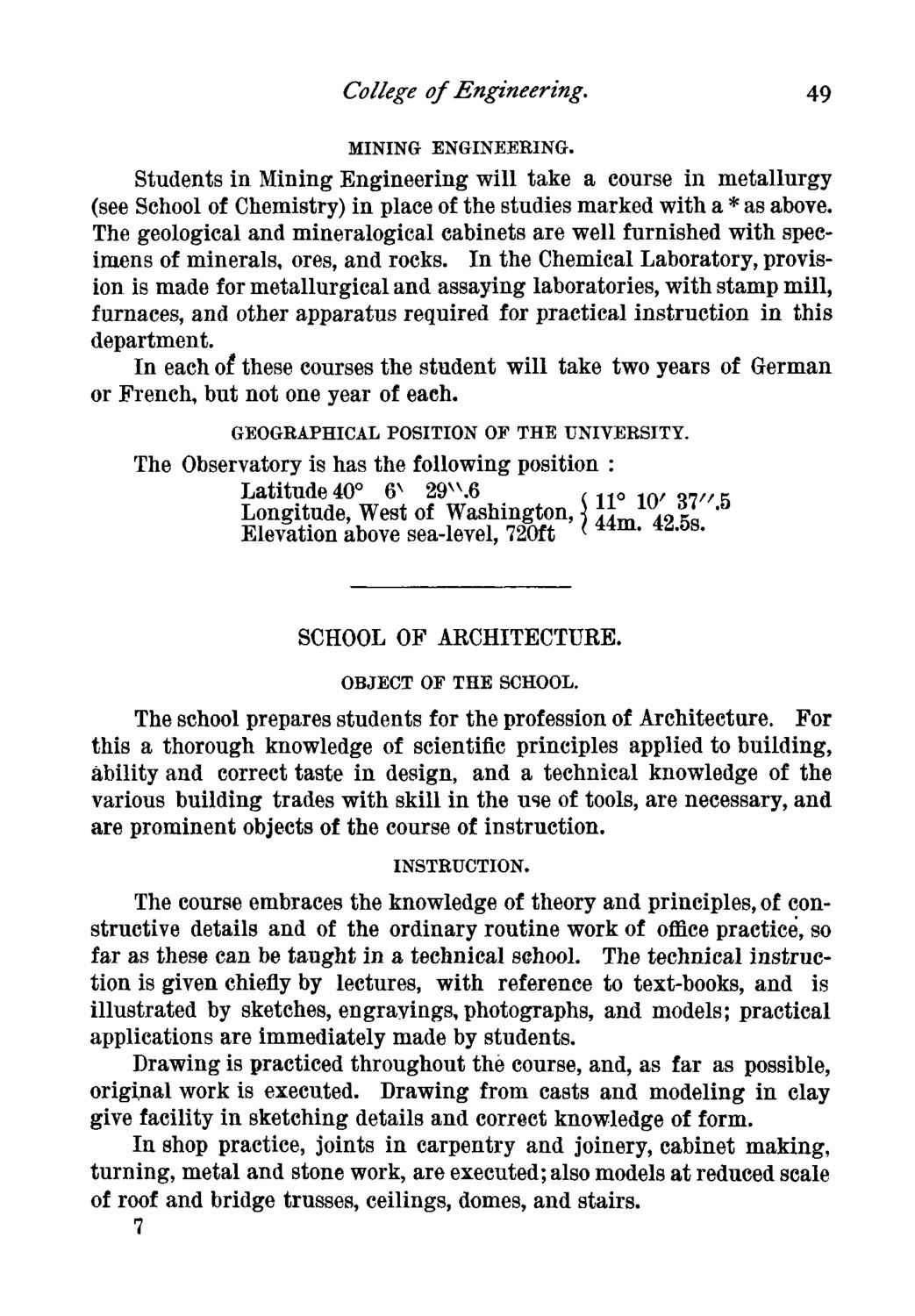| |
| |
Caption: Course Catalog - 1882-1883
This is a reduced-resolution page image for fast online browsing.

EXTRACTED TEXT FROM PAGE:
College of Engineering. MINING ENGINEERING. 49 Students in Mining Engineering will take a course in metallurgy (see School of Chemistry) in place of the studies marked with a * as above. The geological and mineralogieal cabinets are well furnished with specimens of minerals, ores, and rocks. In the Chemical Laboratory, provision is made for metallurgical and assaying laboratories, with stamp mill, furnaces, and other apparatus required for practical instruction in this department. In each of these courses the student will take two years of German or French, but not one year of each. GEOGRAPHICAL POSITION OF THE UNIVERSITY. The Observatory is has the following position : Latitude 40° 6X 29V\6 (1.oin, , , „ , Longitude, West of Washington, J L4/m^> o4<J 0S 5I Elevation above sea-level, 720ft <• 4 - - SCHOOL OF ARCHITECTURE. OBJECT OF THE SCHOOL. The school prepares students for the profession of Architecture. For this a thorough knowledge of scientific principles applied to building, ability and correct taste in design, and a technical knowledge of the various building trades with skill in the use of tools, are necessary, and are prominent objects of the course of instruction. INSTRUCTION. The course embraces the knowledge of theory and principles, of constructive details and of the ordinary routine work of office practice, so far as these can be taught in a technical school. The technical instruction is given chiefly by lectures, with reference to text-books, and is illustrated by sketches, engravings, photographs, and models; practical applications are immediately made by students. Drawing is practiced throughout the course, and, as far as possible, original work is executed. Drawing from casts and modeling in clay give facility in sketching details and correct knowledge of form. In shop practice, joints in carpentry and joinery, cabinet making, turning, metal and stone work, are executed; also models at reduced scale of roof and bridge trusses, ceilings, domes, and stairs. 7
| |